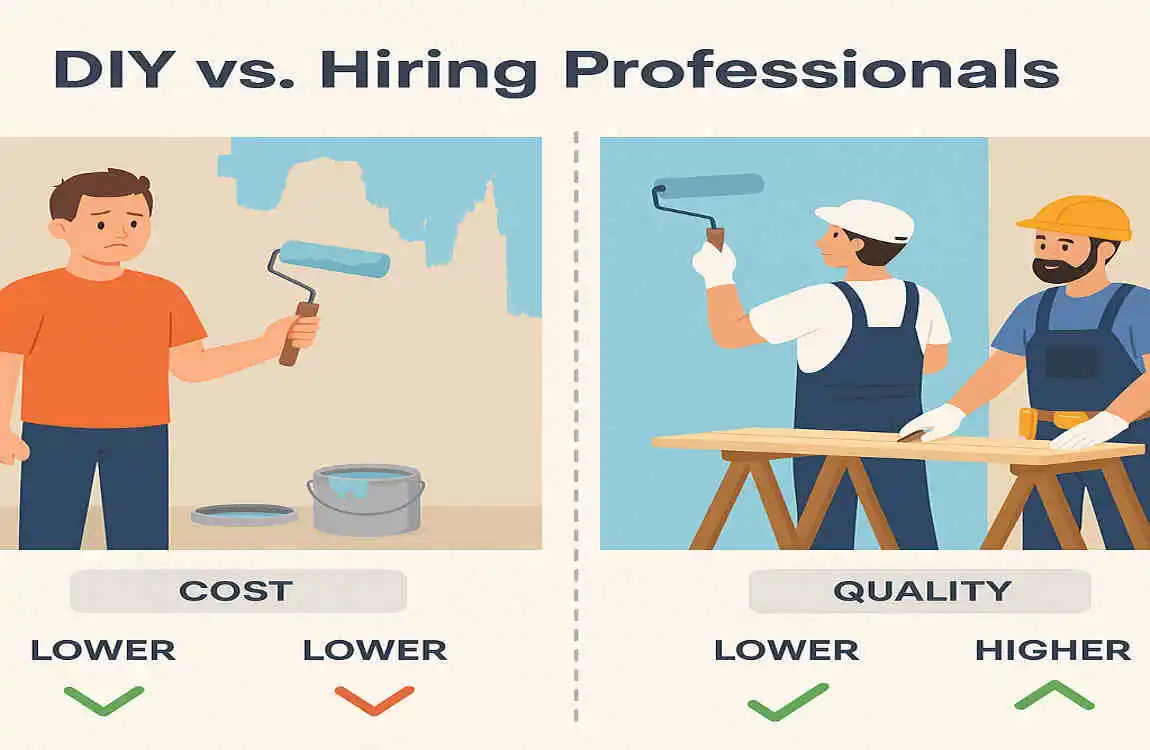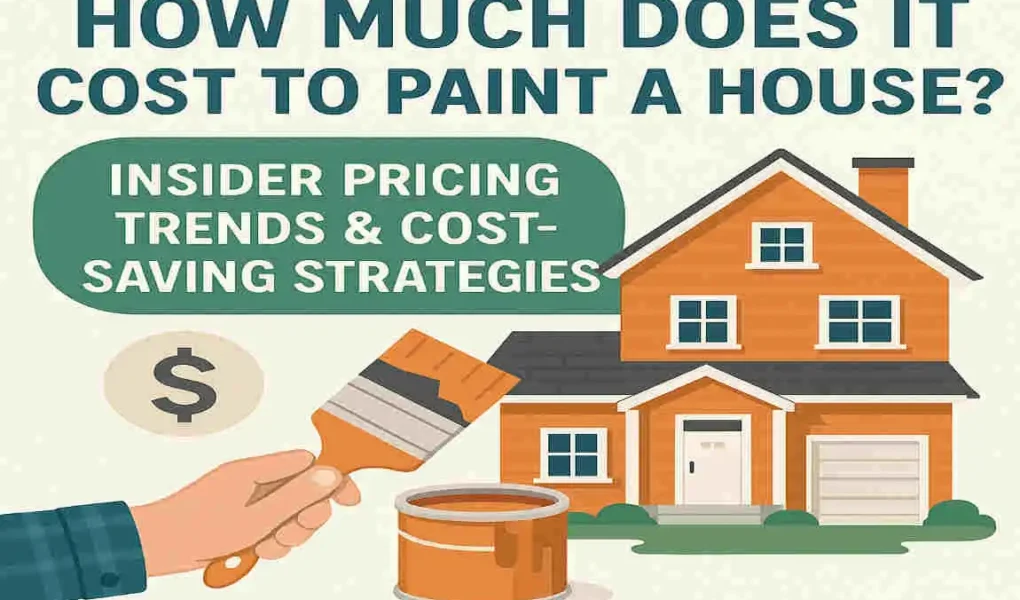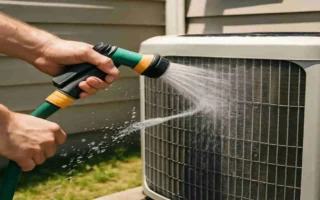Are you thinking about giving your home a fresh coat of paint? Whether you’re looking to refresh the interior or give your home’s exterior a facelift, understanding the costs involved is crucial.
Overview of House Painting Costs

When it comes to painting your house, the costs can vary widely depending on several factors. On average, you can expect to pay between $1,500 and $6,000 for a professional paint job. However, the price can range from $1,000 for a small DIY project to $10,000 or more for a large, complex job.
Interior vs. Exterior Painting
The cost of painting your home’s interior and exterior can differ significantly. Interior painting typically ranges from $1,500 to $4,000, while exterior painting can cost between $2,000 and $6,000. The price difference is due to factors such as the surface area to be painted, the type of paint used, and the labor involved.
National Average Painting Costs
According to recent data, the national average cost to paint a house is around $3,000 to $4,000. However, this number can vary based on your location, the size of your home, and the complexity of the project. Keep in mind that these are just averages, and your specific project may fall above or below this range.
Key Factors Influencing Painting Costs
Several factors can impact the cost of painting your house. Let’s take a closer look at some of the most important ones:
House Size and Square Footage
The size of your home and the square footage to be painted are significant factors in determining the overall cost. Larger homes with more surface area to cover will naturally cost more to paint than smaller ones.
Type of Paint and Quality
The type of paint you choose and its quality can also affect the cost. High-quality paints with better coverage and durability may cost more upfront, but can save you money in the long run by requiring fewer coats and lasting longer.
Surface Preparation Needs
Proper surface preparation is essential for a successful paint job. Depending on the condition of your walls, you may need to invest in repairs, sanding, or priming before painting. These additional steps can increase the project’s overall cost.
Number of Coats Required
The number of coats needed to achieve the desired color and coverage can also impact the cost. In some cases, a single coat may be sufficient, while others may require two or more coats for optimal results.
Labor Costs by Region and Professional vs. DIY
Labor costs can vary significantly depending on your location and whether you hire a professional or go the DIY route. In general, professional painters charge between $20 and $50 per hour, while the cost of DIY materials can range from $100 to $500 or more.
Accessibility and Special Features
If your home has unique architectural details, high ceilings, or other features that make painting more challenging, you may need to budget for additional labor and equipment.
Seasonal Trends and Timing
The time of year you choose to paint your house can also impact the cost. During peak painting seasons, such as spring and summer, demand is higher, and prices may be elevated. Conversely, painting during the off-season may result in lower costs and better deals.
Detailed Cost Breakdown
To give you a better understanding of the costs involved in painting your house, let’s break down the expenses into three main categories: materials, labor, and additional services.
Materials
- Paint: $20 to $50 per gallon, depending on quality and brand
- Primer: $15 to $30 per gallon
- Brushes and rollers: $10 to $50
- Tape and tarps: $10 to $30
- Other supplies: $20 to $50
Labor
- Professional painter hourly rate: $20 to $50
- Project duration: 2 to 7 days, depending on size and complexity
- Total labor cost: $400 to $3,500 or more
Additional Services
- Power washing: $100 to $300
- Old paint removal: $200 to $500
- Repairs: $100 to $500 or more, depending on the extent of the damage
Pricing Trends in 2025 for House Painting
As we move into 2025, several factors are influencing the cost of house painting. Let’s take a look at some of the key trends:
Recent Changes in Paint Prices and Labor Costs
Over the past year, paint prices have remained relatively stable, though some brands have experienced slight increases due to supply chain issues. Labor costs, on the other hand, have risen modestly as demand for skilled painters continues to grow.
Impact of Supply Chain or Economic Trends
Global supply chain disruptions and economic factors can impact the cost of painting materials and labor. Keeping an eye on these trends can help you anticipate potential price changes and plan your project accordingly.
Emerging Eco-Friendly or Specialty Paints
The demand for eco-friendly and specialty paints, such as those with low VOCs or unique finishes, is on the rise. While these paints may come with a higher price tag, they offer benefits like improved air quality and enhanced durability.
Regional Cost Variations
Painting costs can vary significantly depending on your location. Urban areas with a higher cost of living tend to have higher painting costs, while rural areas may offer more affordable rates. Researching local pricing trends can help you set realistic expectations for your project.
Cost Comparison: Interior vs. Exterior Painting
To help you better understand the cost differences between interior and exterior painting, let’s take a look at a comparison table:
AspectInterior PaintingExterior Painting
Average Cost Range $1,500 – $4,000 $2,000 – $6,000
Surface Prep Needs Minor repairs, drywall patching , Power washing, scraping, and repair
Paint Type: Interior-grade, low-VOC options. Weather-resistant, durable coatings
Labor Complexity Medium Higher due to ladders/scaffolding
As you can see, exterior painting tends to be more expensive due to the need for specialized paints, more extensive surface preparation, and increased labor complexity.
DIY vs. Hiring Professionals: Cost and Quality Implications

When it comes to painting your house, you have two main options: DIY or hiring professionals. Let’s explore the cost and quality implications of each approach:
Average Cost Savings with DIY
Opting for a DIY paint job can save you money on labor costs. On average, you can save between $400 and $3,500 or more, depending on the size and complexity of your project. However, keep in mind that you’ll need to invest time and effort into completing the job yourself.
Risks and Benefits of DIY Painting
While DIY painting can be cost-effective, it comes with its own set of risks and benefits. On the plus side, you have complete control over the project, and you can work at your own pace. However, without professional experience, you may encounter challenges such as uneven coverage, paint drips, or improper surface preparation, which can affect the final result.
How Professional Painting Ensures Quality and Durability
Hiring a professional painter ensures a high-quality result and long-lasting durability. Experienced painters have the skills and knowledge to prepare surfaces properly, apply paint evenly, and achieve a flawless finish. While the upfront cost may be higher, the investment in professional painting can pay off in the long run through increased property value and reduced maintenance needs.
When to Invest in Professionals Despite Higher Upfront Costs
In some cases, it’s worth investing in professional painters despite the higher upfront costs. If your home has complex architectural details, high ceilings, or requires extensive surface preparation, professionals can tackle these challenges more effectively. Additionally, if you’re short on time or lack the necessary skills and equipment, hiring pros can save you from potential headaches and subpar results.
Cost-Saving Strategies to Paint Your House Within Budget
Painting your house doesn’t have to break the bank. By implementing these cost-saving strategies, you can achieve a beautiful result while staying within your budget:
Choosing the Right Time of Year for Discounts
Painting during the off-season, such as fall or winter, can often result in lower costs and better deals. Contractors may offer discounts to fill their schedules during slower months, so keep an eye out for seasonal promotions.
Selecting Quality but Cost-Effective Paint Brands
While it’s tempting to go for the cheapest paint option, investing in a quality but cost-effective brand can save you money in the long run. Look for paints with good coverage and durability to minimize the number of coats needed and extend the life of your paint job.
Doing Surface Prep Yourself Before Hiring Painters
If you’re hiring professionals, consider doing the surface preparation yourself to save on labor costs. Simple tasks like cleaning, sanding, and minor repairs can be handled by homeowners, reducing the overall project cost.
Getting Multiple Quotes from Reliable Contractors
Don’t settle for the first quote you receive. Reach out to multiple reliable contractors and compare their prices, services, and reviews. This will help you find the best value for your money and ensure you’re working with a trustworthy professional.
Focusing on Key Areas for Partial Painting Projects
If a full-house paint job is out of your budget, consider focusing on key areas that need the most attention. Painting high-traffic areas, such as the kitchen, living room, or entryway, can make a significant impact without the cost of painting the entire house.
Utilizing Paint Sales, Coupons, and Bulk Buying Options
Keep an eye out for paint sales, coupons, and bulk buying options to save on materials. Many hardware stores and paint suppliers offer regular promotions, so timing your purchase right can lead to significant savings.




